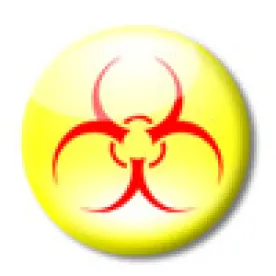On July 28, 2016, the U.S. Environmental Protection Agency (EPA) proposed changes to the existing regulations governing significant new uses of chemical substances under the Toxic Substances Control Act (TSCA) to align these regulations with revisions to the Occupational Safety and Health Administration’s (OSHA) Hazard Communications Standard (HCS), as well as changes to the OSHA Respiratory Protection Standard and the National Institute for Occupational Safety and Health (NIOSH) respirator certification requirements pertaining to respiratory protection of workers from exposure to chemicals. One of the proposed changes would be to make it a significant new use not to implement a hierarchy of controls to protect workers. Persons subject to applicable significant new use rules (SNUR) would be required to determine and use appropriate engineering and administrative controls before using personal protective equipment (PPE) for worker protection, similar to the requirements in the OSHA standards at 29 C.F.R. Section 1910.134(a)(1) and guidance in Appendix B to Subpart I of 29 C.F.R. Part 1910. According to EPA, this change is being proposed partly due to comments received on recently promulgated SNURs. As reported in our December 28, 2011, blog item, EPA proposed on December 28, 2011, SNURs for 17 chemical substances that were the subject of premanufacture notices (PMN). Of particular interest, seven of the chemical substances were multi-walled carbon nanotubes, while six were fullerenes, and the proposed SNURs prompted significant comment. In the July 28, 2016, proposed rule, EPA states that in response to the December 28, 2011, proposed SNURs, it received comments from 26 public submissions. According to EPA, each of the comments generally stated that EPA’s approach of exclusively identifying the absence of adequate PPE as a significant new use instead of engineering and administrative controls is not following the best occupational health and safety practices. The commenters suggested approaches that EPA could adopt. Several commenters identified the industrial hygiene “hierarchy of controls” approach for workplace health and safety, where elimination, substitution, engineering controls, and workplace or administrative controls should be implemented before use of PPE for worker protection. Several commenters stated that persons subject to SNURs should follow the OSHA requirements to use controls that are higher in the hierarchy of controls before requiring employees to use PPE. Some commenters suggested that EPA should specifically incorporate the OSHA requirements at 29 C.F.R. Section 1910.134(a)(1) into each SNUR or modify standard requirements for SNURs at 40 C.F.R. Section 721.63 to require a hierarchy of controls. EPA promulgated final SNURs on June 26, 2013, and responded to the comments, agreeing that a hierarchy of controls should be applied and that PPE should be the last option to control exposures. Below is a sample of comments on the December 28, 2011, proposed SNURs:
-
American Federation of Labor and Congress of Industrial Organizations (AFL-CIO), urging EPA to adopt control hierarchy as it is practiced in occupational safety and health;
-
NIOSH, recommending a hierarchical approach to reduce worker exposures that relies on respiratory protection only after other approaches have been attempted;
-
International Center for Technology Assessment (ICTA), stating that EPA must employ the hierarchy of controls and revise its regulations to protect workers better “from what might become the next asbestos crisis”; and
-
A coalition of unions and environmental health groups representing worker and public health, arguing that EPA could formally interpret its existing regulations as already requiring compliance with the hierarchy of controls.
Under TSCA, EPA requires manufacturers of new chemical substances, including new nanomaterials, to submit PMNs. EPA’s web page on the control of nanoscale materials under TSCA lists actions EPA has taken to control and limit exposures to new nanoscale materials, including requiring the use of PPE and engineering controls. In light of EPA’s proposed rule, however, and the influence comments on EPA’s December 28, 2011, proposed SNURs have had, manufacturers of new nanomaterials should implement a hierarchy of controls whenever possible.




 />i
/>i

